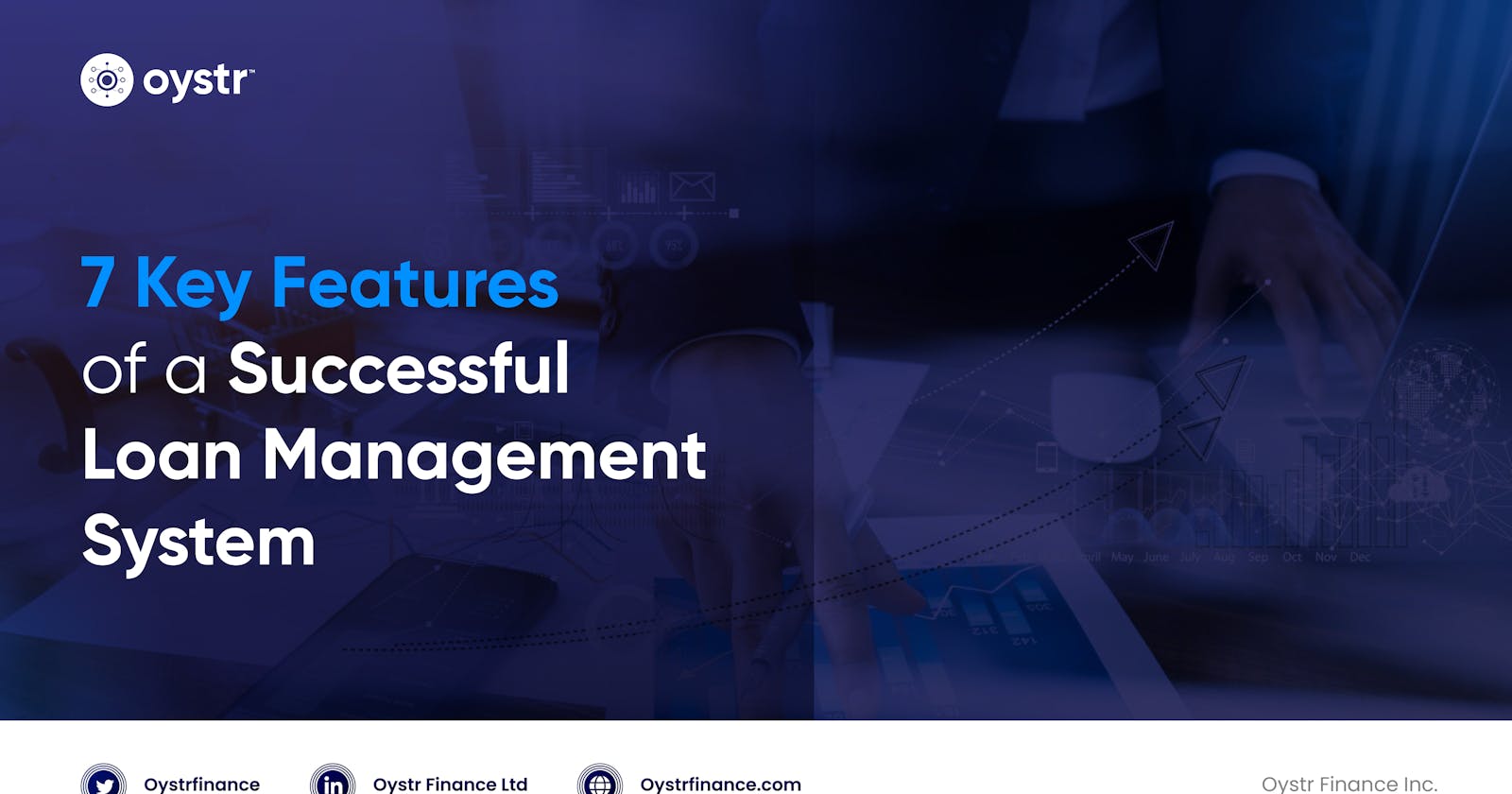Loan origination and management can be a complex and time-consuming task, however, a great loan management system can simplify it and help you succeed in the lending sector.
In the highly competitive lending industry, the right loan management system can make all the difference, separating you from the competition and establishing your financial institution as a top choice for borrowers.
The perfect system will offer the scalability, credit risk analysis, and simplicity needed in launching loan products and managing them. With numerous loan origination and servicing software options available, it's important to consider specific features when selecting one that best suits your business and loan offerings.
In this article, we’ll discuss the top seven (7) features you should look out for when choosing the best loan management system. Read on.

7 Best Features of a Loan Management System (LMS)
Using a single Loan management system to handle all your loan processes, can bring speed, accuracy, and expansion to your financial institution. However, it takes a great loan management system to meet your expectations. Here are 7 features to look out for:
1. Loan Origination and Application Processing
It's crucial to prioritize loan origination and application processing when selecting a loan management system. One of the primary advantages of utilizing an LMS is its capacity to accelerate the acceptance and processing of loan applications, providing lenders with a significant advantage in terms of speed.
Your chosen LMS should have customizable application forms, document management tools, and automated credit checks to ensure efficient processing. This will allow you to save time, decrease errors, and increase the efficiency of your lending process.
In addition, it is essential to keep in mind that every business has distinct requirements, and your loan management system must be dynamic and adaptable to meet the specific lending requirements of your financial institution. As a lender, you should be able to create and offer loan products that are tailored to the specific needs of each customer.

2. Credit Risk Analysis and Decision-Making Tools
Effective credit assessment and analysis are essential to the success of any lending operation. Your lending operations can’t operate smoothly with inaccurate data or diminished speed in analyzing borrowers' creditworthiness. It's crucial to find a loan management system that can accurately assess the creditworthiness of applicants.
By automating the process, you can quickly and easily determine the most appropriate loan products for each applicant, reducing the risk of bad debt.
A quality LMS should provide accurate credit risk data and analysis, allowing you to evaluate each customer's creditworthiness and make smarter lending decisions.
This may involve pulling information from multiple credit bureaus or providing up-to-date, reliable data promptly. Ideally, your LMS should provide these integrations, adding efficiency and providing a complete view of each applicant's credit scores.
3. Centralized System
Several modules, including onboarding, credit assessment, underwriting, and funding, must be considered by lenders to complete the lending lifecycle. However, a major issue in the lending industry is having to use multiple software to carry out all lending activities. Most times lenders use a different system for credit analysis, a different one for loan origination, and another for disbursement and recovery. Your ideal loan management system should enable you to complete the entire lending process in a single system.
With this, you can serve more SMEs and small businesses without incurring higher costs through multiple systems. Moreover, you can use a single system to store and retrieve borrowers’ data to ease up subsequent lending processes.
By having a system that either has all of these modules built into the platform, allows for customizable modules, or even supports the integration of third-party apps, you can easily alleviate the burden on lenders' shoulders, save time for your team, and enhance the customer experience, making it an essential feature to look for when searching for the ideal loan system.
A centralized system allows you to monitor all lending activities, understand customers' needs, and offer the right products to them.

4. Cloud-based Software
Cloud-based software for debt administration can facilitate deployment for lenders. It ensures speedy adoption, provides software flexibility, allows you to contact the IT department of your service provider for support, and, in most cases, includes frequent upgrades and automatic updates.
Additionally, the cloud enables you to access the program from anywhere with an internet connection and to gain access to any information more quickly.
5. Compliance and Regulatory Reporting
Compliance is very essential in the entire finance sector. There are essential regulations in lending that must be complied with at all times to prevent sanctions. Your loan management system should enable you to comply with all regulatory requirements and reporting obligations.
In doing so, it should aid the easy generation of reports, loan portfolios, and defaults and track regulatory compliance.
Most essentially, your LMS must at all times comply with data privacy, consumer protection, and anti-money laundering laws.

6. Security and Data Protection
It's never a good idea to compromise on security and data protection in the lending industry. All chosen software must have comprehensive security features to protect the sensitive data of you and your borrowers and prevent fraud or unauthorized access.
Your chosen Loan Management System should have great security features, including encryption, multi-factor authentication, and user access controls.
7. Loan Portfolio Management and Reporting
For a loan management system to be effective, it must include extensive reporting and analytics capabilities. This means that lenders should have access to comprehensive data regarding their loan portfolio, including loan performance, delinquency rates, and borrower demographics. By having access to such data, lenders can make informed decisions on their lending practices and uncover improvement opportunities.
Moreover, reporting and analytics can help lenders comply with regulatory requirements and give investors and stakeholders transparency. The system allows lenders to generate reports that verify their compliance with various requirements and manage their loan portfolios.
Conclusion
Choosing the best loan management or loan origination system has to be intentional to prevent future crises. Ensure your LMS has all the essential features that meet your lending business needs and allows you to minimize risk and maximize the profitability of your lending operations. With Oystr Float, you can launch macro loans in less than 30 minutes. Manage your entire loan origination process, and have a smooth lending process. Visit our website today to learn more.

